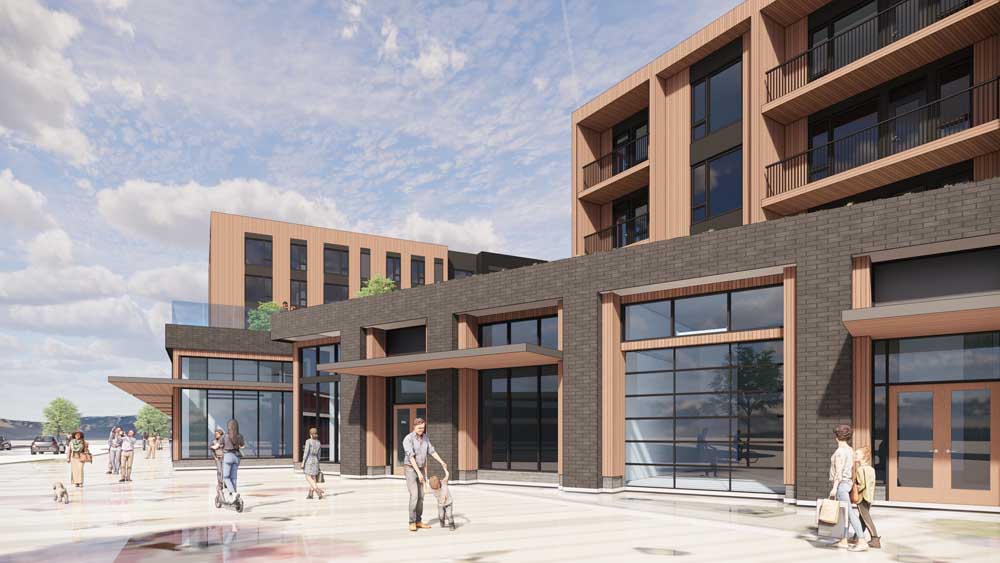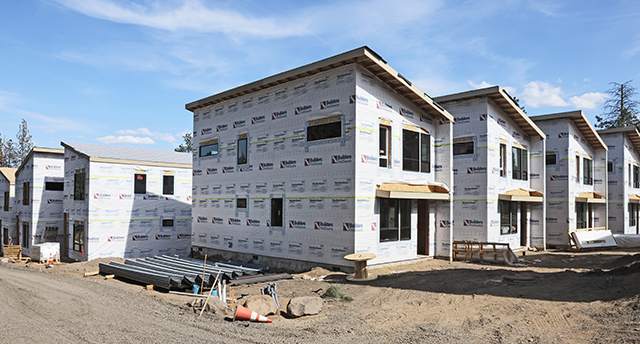Get ready for rock climbing
Published 12:00 am Monday, November 9, 2015

- ORIG. / Andy Tullis/ The Bulletin Bend Rock Gym climbing coach Sarah Wyant, left, attaches a carabiner to the harness on Bend Rock Gym climbing coach, Jessica Warwick, while preparing to climb at Bend Rock Gym in Bend Wednesday morning 9-16-15.
Rock climbing is not a sport to simply jump right into.
That becomes quite apparent when walking along the hiking trail at Smith Rock State Park and glancing up to see climbers clinging to the impossibly steep rock walls.
Indoor rock climbing gyms provide a safe, less-intimidating arena for beginners to learn the basics of the sport before venturing out to scale Monkey Face.
Climbing instructors and coaches at indoor gyms can help set up beginners with the proper equipment, including climbing shoes and harnesses. Plus, they provide lessons.
Experienced climbers say the biggest hurdle to getting started is not physical, but mental.
“People don’t think they can do this,” says Jessica Warwick, Bend Rock Gym manager and a climbing coach. “So when they come in it’s telling them that they are capable of doing this. Once they go up the wall, they’re like, ‘Oh my gosh, I can do this.’ It’s mentally challenging. You have to overcome a lot of fear and challenge yourself.”
The highest walls at the Bend Rock Gym — the only indoor climbing gym in Bend — are nearly 50 feet up, rather than hundreds of feet up like many at Smith Rock, near Terrebonne.
“People definitely feel more comfortable inside, especially people who have never done it before,” Warwick says. “Outside the exposure can be extremely intimidating and mess with your head. Climbers love going outside, but having some good coaches and mentors is good to help them work through that mental barrier once they go outside.”
Sarah Wyant, a coach and marketing director at Bend Rock Gym, says indoor rock gyms provide a “safer, more controlled environment.” Inside, novice climbers are more apt to lean on the advice of experienced and certified coaches and instructors rather than friends.
“We want people to learn from staff, rather than a buddy,” Wyant says. “That’s actually kind of new in the climbing world.”
In a typical gym introduction or one-hour lesson at Bend Rock Gym, the instructor will fit the new climber with the right shoes and harness, then show them how to clip their harness into the auto belay rope.
Auto belays are devices that eliminate the need for a human belayer, who secures the rope. Using a self-regulating magnetic braking system, the auto belay takes up the slack as a climber ascends and safely controls the descent when the climber lets go.
“They (auto belays) started as rescue devices for elevator shafts in mines,” says Jim Stone, owner of Bend Rock Gym. “Climbers thought they could do something with it. You can fall back and it holds you. It’s been good for business. You can come and climb on your own.”
Beginners make use of the auto belay as they learn to climb, but they also work as a training tool for more advanced climbers or people simply seeking a cardio workout.
“Parents can just throw their kids on the auto belay and their kids can climb up,” Warwick says. “So parents don’t need to necessarily know a lot of about rock climbing or even how to belay.”
Another aspect that makes indoor climbing more approachable to the beginner than outdoor climbing is that the routes are easier to follow. All routes, given a rating such as 5.7 or 5.8, are color coded, and the plastic hand and foot holds are much more obvious. (Technical rock climbing routes have ratings from 5.0, the easiest, to 5.15, the most difficult.)
The yellow beginner wall at Bend Rock Gym features the easiest routes, shorter ones with the biggest holds. On more advanced routes at the gym, setters will attempt to design similar routes to those at Smith Rock.
“Climbing indoors and climbing outdoors are very different,” Warwick says. “Outdoor climbers come here (Bend Rock Gym) during the winter to train, and they train really hard. Once spring hits, they’re back out at Smith. If you get really into it, they will utilize our hang boards and weight room. They train and then go hit it hard out at Smith.”
Beginner rock climbers can continue to progress to harder and harder routes as they develop skills, technique and strength. Most fit people who have never tried rock climbing before can come into the gym and scale a 5.7- or 5.8-rated route. Some can even advance quickly to 5.9 or 5.10 routes, Stone says.
“People progress at their own rate,” Warwick says. “But they progress as long as they come in enough. Once a month isn’t going to do it.”
For those who want to try rock climbing but simply cannot overcome their fear of heights, bouldering is a less-intimidating option. Bouldering is a form of rock climbing performed on overhanging rocks closer to the ground without the use of ropes or harnesses. Many indoor rock gyms now offer bouldering routes as well.
Located in southeast Bend, the Bend Rock Gym expanded more than two years ago, and has hosted climbers as young as 2 and as old as 82, Warwick says.
Rock climbing is for all ages, and many who try it cannot get enough.
“People don’t really even know they love it until they get in here,” Warwick explains. “They get hooked and meet people here in the gym. I always hear, ‘I can’t do this.’ Then they do it and they love it. Some people climb to lose weight, some to gain muscle. It’s an incredible workout. Some do it because it’s their passion, like mine.” •







